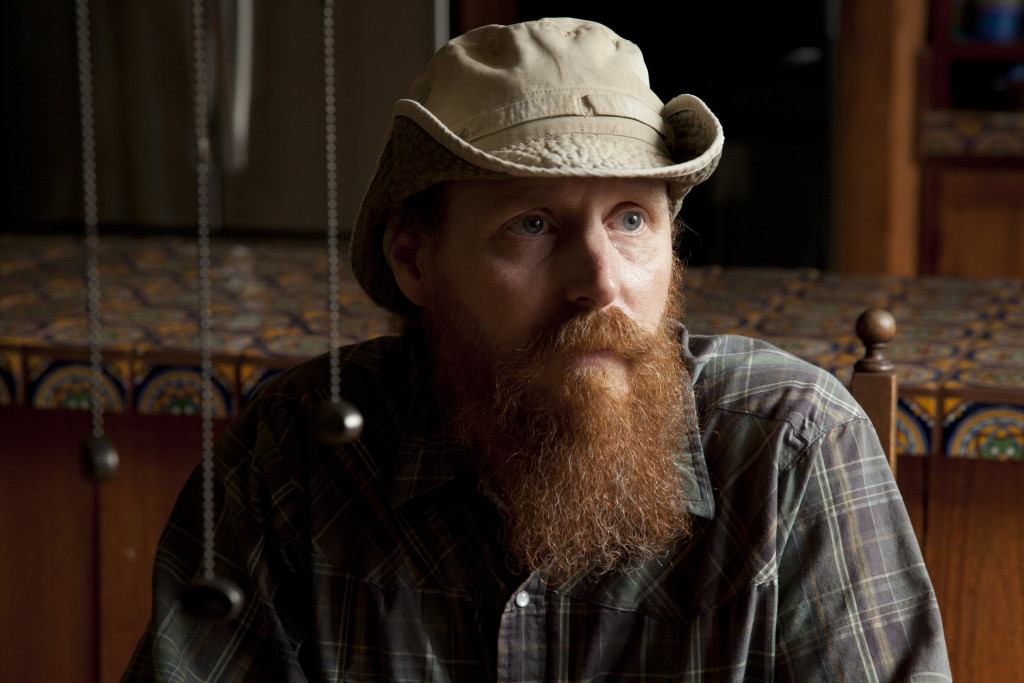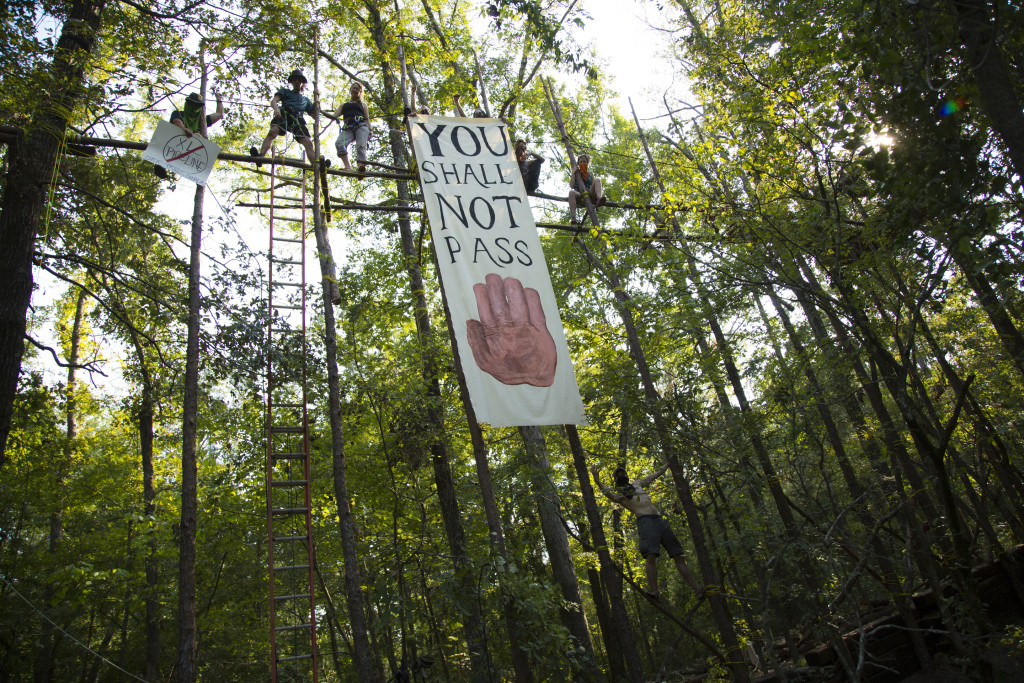Originally published at Firedoglake.
The most emotionally devastating and artistically gifted scene in Above All Else, John Fiege’s new climate change documentary, comes late in the film. Deep in the night, East Texas landowner David Daniel hikes through the darkness to an environmental activist encampment where he has to deliver bad news. The scene is lit only by the head lamps that Daniel and the others wear, highlighting or obscuring their grief-stricken faces. Around them is the hush and murmur of the forest. It’s a scene that may have occurred millions of times through history — a half dozen humans, alone among untouched wildness, sharing their pain.
By the early months of 2012, after every Occupy camp in Texas had been evicted, the state became the sight of a dramatic new, ongoing protest: the Tar Sands Blockade. Though largely ignored by the national environmental advocacy groups that had fought to delay the Keystone XL Pipeline, construction of the southern leg of the pipeline continued, cutting across beautiful, untouched Texas wild lands and waterways.
Until police violence and a legal settlement forced a halt to action, the Blockade operated almost continuously from the famous tree village through dozens of smaller direct actions, working from landowners’ property and a secluded tent village. Though the movement attracted many Occupiers and long time activists, it also drew many who’d never taken a stand before — Texas landowners, parents and grandparents who wanted East Texas (and Planet Earth) to be beautiful and life sustaining for their children. The Blockade was truly a citizen’s movement.

Above All Else focuses on Daniel, a former high-wire acrobat and circus performer, who moved to isolated East Texas to raise a family and escape the world. Mere months after completing his new home, he found signs of surveyors snooping on his property. Soon TransCanada’s first legal threats arrived — let us build the pipeline or else.
The film opens with Daniel on a pristine creek through his land. The camera rests meditatively on the wild life, the fish, on Daniel as he bends down to drink from the pure water. At the close of the film — after fighting the pipeline until it almost costs him his freedom and family — he stands in the creek’s muddy remains with his wife and toddler-age daughter. There are no more fish.
If you followed news of the Blockade, you’ll be fascinated by aerial footage that shows how the Keystone XL pipeline literally curves around the remains of the tree village. For those of us who followed the Blockade, the outcome is already known — the Keystone XL southern leg is open for business. The story of the struggle is still worth telling.
Above All Else features breathtaking footage shot from the tree village high above as construction equipment comes dangerously close. Since they wouldn’t return his calls, Director John Fiege (Mississippi Chicken) mixes TransCanada company propaganda with gripping scenes of truck blockades to show how the party line changed as the activists generated increasing bad publicity for the pipeline.
While the Tar Sands Blockade failed to stop the pipeline, Fiege shows how the East Texas work kept the torch of resistance lit, leading into today’s activism like #XLDissent.
Talking With Director John Fiege
Austin local John Fiege called me earlier this week to talk about his film before it premieres at SXSW next week.
Kit O’Connell, Firedoglake: I saw some faces in your movie I recognized. Watching it was an emotional experience!
John Fiege: Yeah, I am sure.
FDL: I’m sure making it was for you, too. Your eye in making this documentary doesn’t feel neutral. It feels like you have a say in it. Do you agree?
JF: It doesn’t attempt some kind of journalistic objectivity.
FDL: What do you think is the role of someone like you in making a picture like this?
JF: It’s important to seek the truth, to not be confined by some arbitrary sense of the equality of two sides of an argument that is so often leaned on in the media. I don’t consider what I did to be an advocacy film either. I don’t consider it to be propaganda or trying to convince anyone of anything. What I am interested in is finding really strong human universal stories of people who are trying to change things.
I think by being truthful to telling that story, you’ll understand the depth of the situation a lot better than you would otherwise. For me it’s almost outside the question of journalistic objectivity. I’m trying to tell this story really well, I’m very concerned with the truth. I do have a certain sense of objectivity, being removed from being an actual activist, but I don’t shy away from really telling one person’s story.

FDL: What do you want viewers to take away from this film?
JF: I try to go behind the simple dichotomies you typically see in the media of the conflict between jobs and the environment, the dichotomous way in which the media talks about these issues. The film is breaking down those dichotomies by showing the very complex, personal aspect of the struggle. The main thing I’m trying to do is give a personal and intimate view of what attempting to change things looks like. What does that lead to? What you witnessed in the film is how one person who takes a stand against something can have a huge impact on the people around him, and those other people will have a huge impact on the people around them.
I think we really documented that in the film. Despite the short term losses, the bigger picture is very encouraging. If people take a stand, other people will stand with them and there can be a domino effect. Courage and resistance are contagious. It’s important for people to understand the power they’re going up against when they try to deal with something like climate change, but at the same time it’s important to see if you do try to go up against these very powerful forces, other people will join you and that’s how social change happens. It’s not a fast or clean or easy process and we shouldn’t fool ourselves into thinking it can be, but I think there’s no other choice but for people to really commit themselves like David and many other people did in the film — to join together.
This pipeline has been an extremely effective way to make the conversation about climate change more serious in this country. I think David personally played a huge role in that.